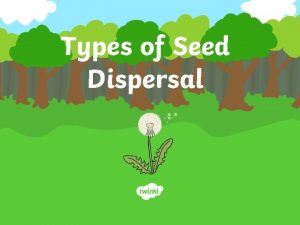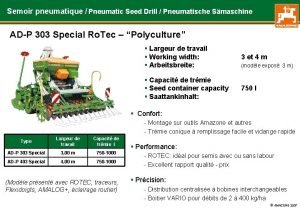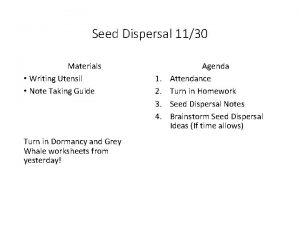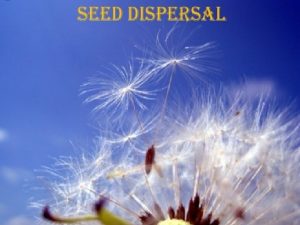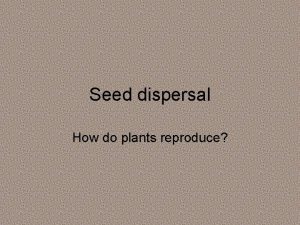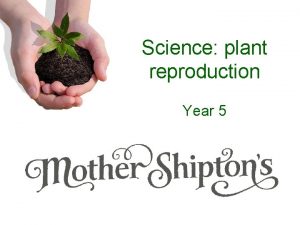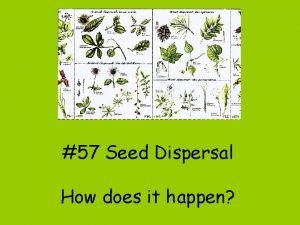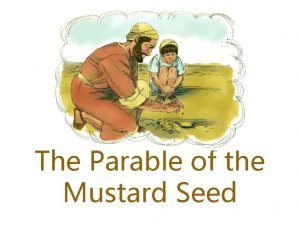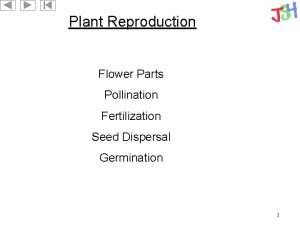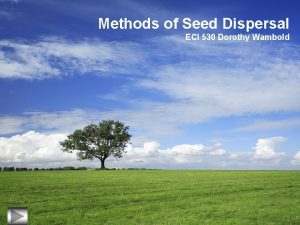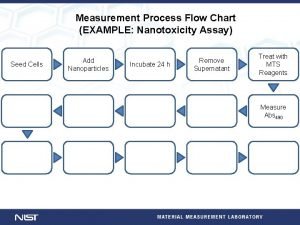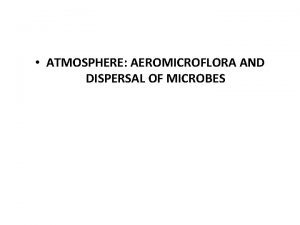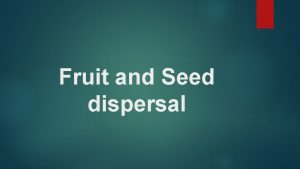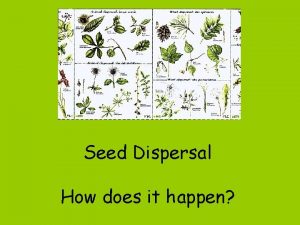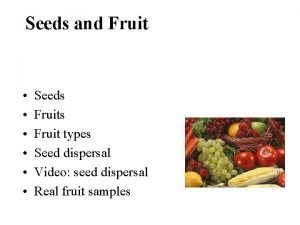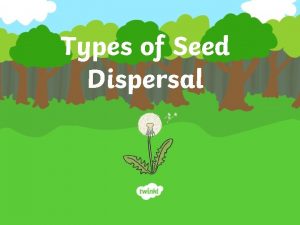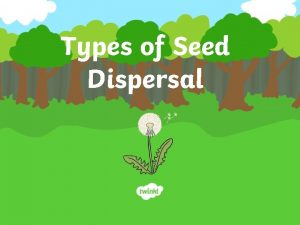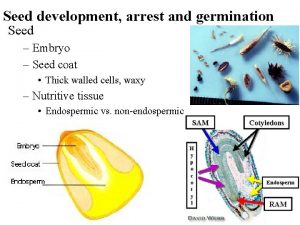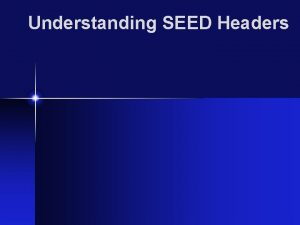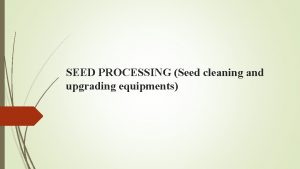WALT explore different types of seed dispersal Can
















- Slides: 16

WALT: explore different types of seed dispersal

Can you remember the different stages of a flowering plant life cycle from last week?

Life Cycle of a Flowering Plant The life cycle of a flowering plant shows the changes that happen to the plant over the course of its lifetime. The main stages of the life cycle of a flowering plant are: 1 2 3 4 5 Germination Growing and flowering Pollination Fertilisation and seed formation Seed dispersal Watch the video below to for a brief introduction: https: //www. bbc. co. uk/bitesize/topics/zpxnyrd/articles/z 2 vdj xs

After pollination has taken place, the flower of a plant will be full of seeds. Its next step is to get rid of these seeds to ensure its survival. In order to get the best chance of survival for future plants, the seeds must be dispersed. What do you think ‘seed dispersal’ means? Why do you think the seeds need to be dispersed?

Plants are rooted to the ground so they need a way to disperse their seeds away from themselves. In other words, they want their seeds to grow new plants in as many different places as possible to ensure that species of plant will survive. Seed dispersal is vital for survival because if a plant can only drop it`s seeds around where it’s growing and a threat arrives then the new plants might not survive. Seed dispersal also makes sure that one area doesn’t become overcrowded. Almost all seeds are made inside fruits. These fruits provide protection and nutrients to the seeds while they are developing.

How do flowering plants disperse their seeds? Let’s take a look at seed dispersal in a bit more detail…

https: //www. bbc. co. uk/bitesize/topi cs/zxfrwmn/articles/z 28 dpbk

Wind Sycamore ‘helicopters’ and dandelion ‘clocks’ both have fruits which have adapted to use the wind to carry the seeds away when the seeds are ready. Photos courtesy of @Doug 88888, ian boyd (@flickr. com) - granted under creative commons licence - attribution

Bursting Some plants have pods full of seeds which will burst, showering the ground with seeds, like the Himalayan Balsam seed. Peas are another example of a plant bursting open to disperse its seeds. Photos courtesy of Ben Grader(@flickr. com) - granted under creative commons licence - attribution

Shakers Some plants rely on being shaken to disperse their seeds. When poppies have produced their seeds and have finished flowering all that is left is a long stem with a dried seed pod. These pods have small holes at the top and rely on wind to shake them to scatter the seeds. This method doesn’t send the seeds very far. Yucca Campestris seeds also need to be shaken. Yucca Campestris seeds Poppy seeds Photos courtesy of janerc (@flickr. com) - granted under creative commons licence - attribution

Water Some plants rely on water to disperse their fruits. These will either grow on the water or by the side of water. Water lilies live on the water so they use the water to disperse their seeds. They make very light seeds which will float away on the water for a while, then sink to the bottom of a pond to grow a new lily. Lily seeds Water lily Photos courtesy of egonwegh(@flickr. com) - granted under creative commons licence - attribution

Palm tree seeds are very light which helps them float and grow another palm tree elsewhere. Palm trees that grow by the oceans drop their seeds which can be swept great distances by the ocean’s currents. Coconuts are well known travellers. Willow tree seeds Palm tree seeds Willow and silver birch trees often grow near water. Their seeds are very light which enables them to float away on water (the silver birch seed is also fluffy which helps them to be dispersed by the wind too). Photos courtesy of Dave_A_2007(@flickr. com) - granted under creative commons licence - attribution

Catching a Ride Some plants such as cockleburs have developed to grow tiny hooks on their fruits which hook on to animals (or people) that pass by the plant. Eventually they will drop off on to the ground. This dog has been covered in burs. Burdock seeds Photos courtesy of Gan. Med 64 s (@flickr. com) - granted under creative commons licence - attribution

Seeds as Food Some plants make tasty fruits. This is to encourage animals (and people!) to eat the fruits. The seeds then pass through the animal unharmed and out the other end with a ready supply of fertiliser (not tasty in the slightest…quite the opposite). This method ensures the seed is given nutrients to help it grow. What types of fruits can you think of that are eaten by animals and people with seeds inside?

Drop and Roll! Some fruits, such as horse chestnuts, have a casing round them which cracks open when it hits the ground. The fruit inside then rolls away from the tree. You can tell which horse chestnuts in the trees are ripe because their casings have already begun to split open before they drop.

Main Task Write the following headings in your book and then write/sort the different plants into the write groups based on how they disperse their seeds. You may need to research each seed type on the internet to help you decide which category they belong to.
 Sycamore dispersal method
Sycamore dispersal method Acorn seed dispersal
Acorn seed dispersal Seed dispersal by animals worksheet
Seed dispersal by animals worksheet Lily seed dispersal
Lily seed dispersal Acorns seed dispersal
Acorns seed dispersal Tomato seed dispersal
Tomato seed dispersal Pollination fertilisation seed dispersal germination
Pollination fertilisation seed dispersal germination How does seed dispersal happen
How does seed dispersal happen Banana seed dispersal
Banana seed dispersal Mustard seed dispersal
Mustard seed dispersal Ovary
Ovary Dispersal by animals
Dispersal by animals Seed dispersal flow chart
Seed dispersal flow chart Claim of policy:
Claim of policy: Dispersal definition
Dispersal definition Aeromicroflora and dispersal of microbes
Aeromicroflora and dispersal of microbes Multilingual definition ap human geography
Multilingual definition ap human geography
